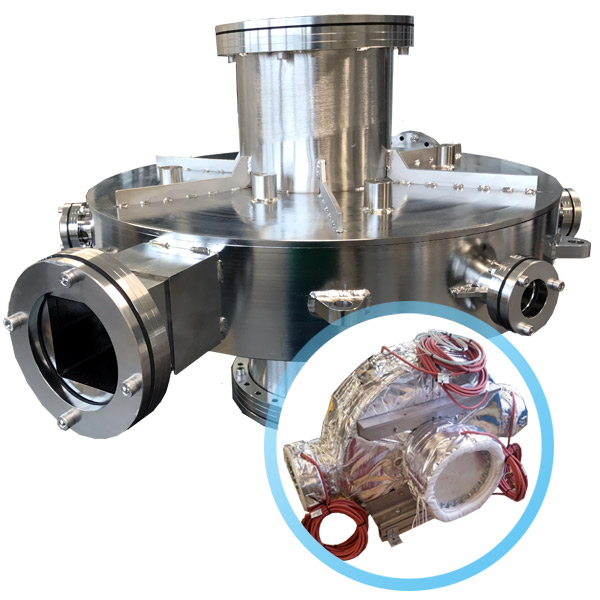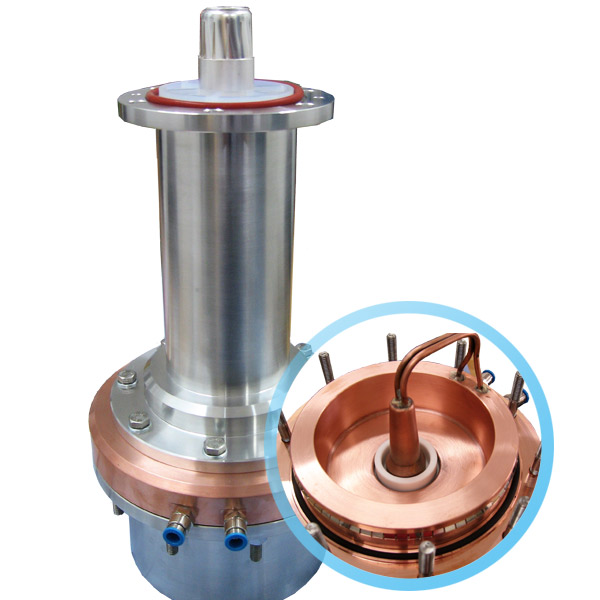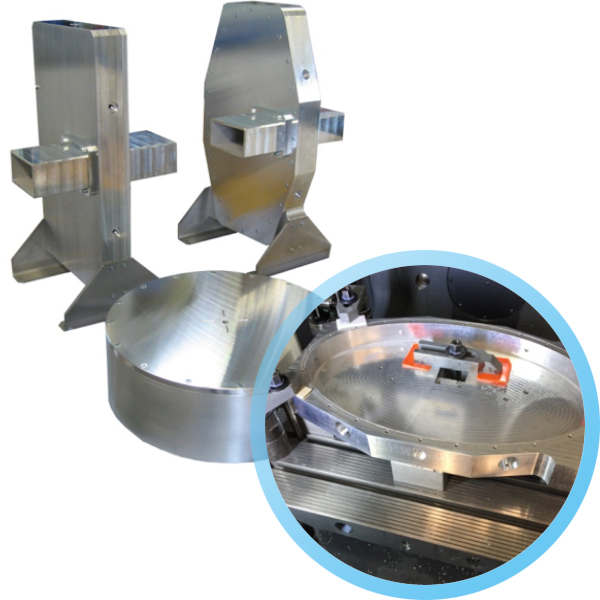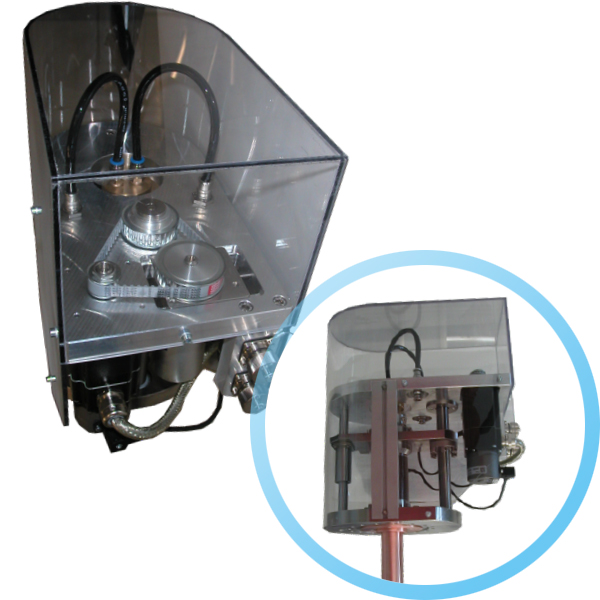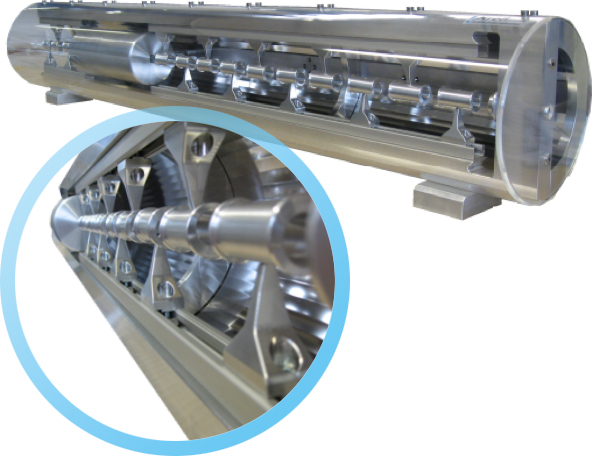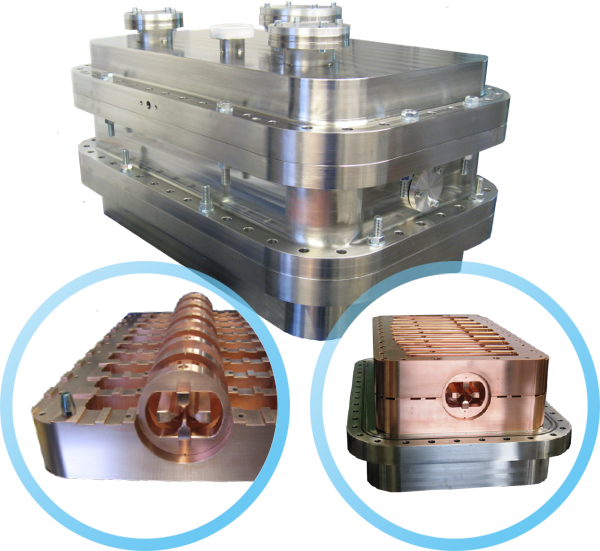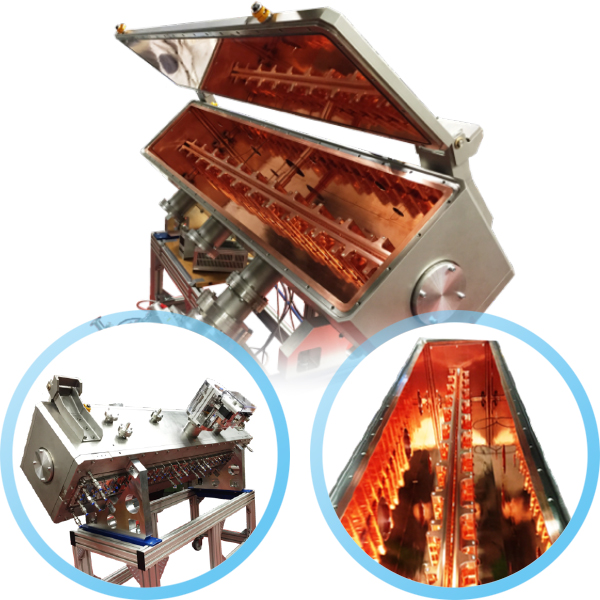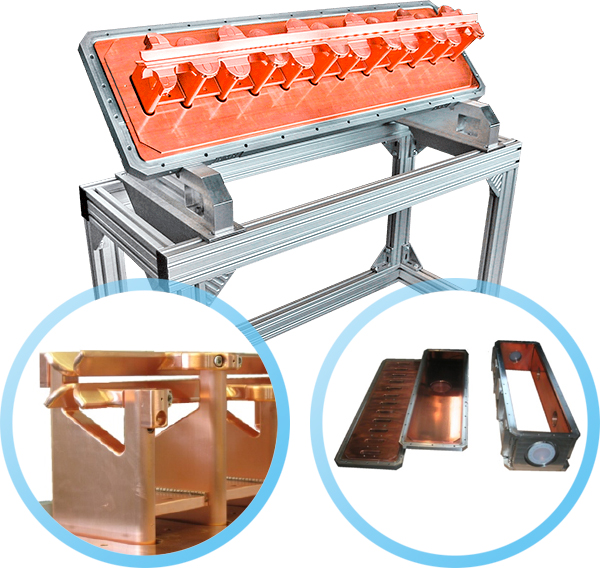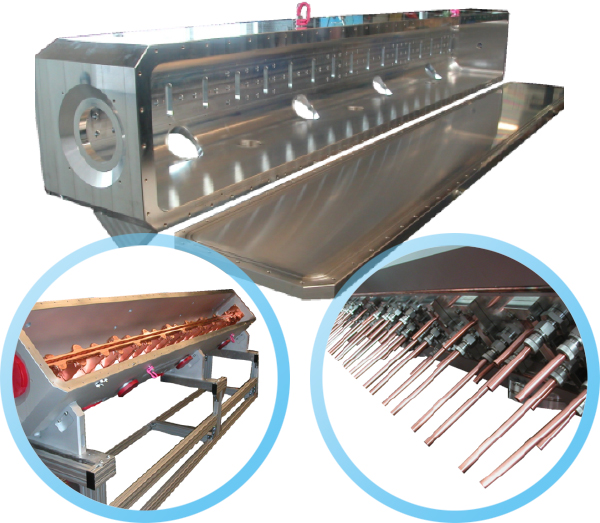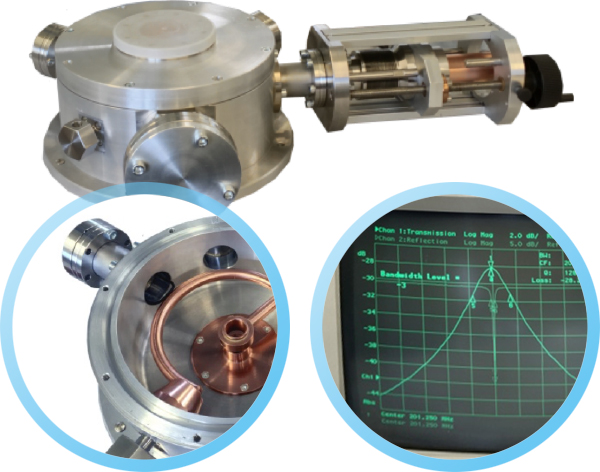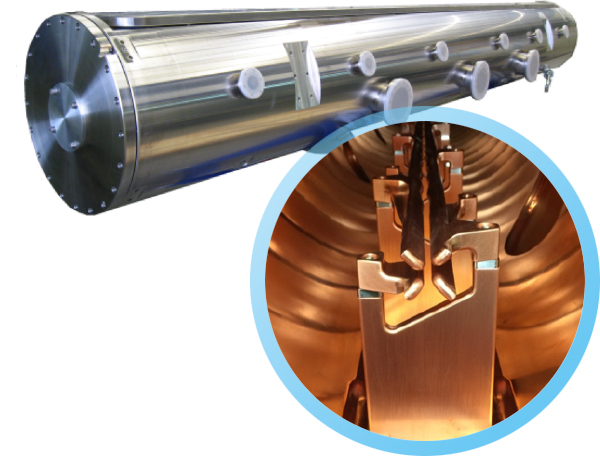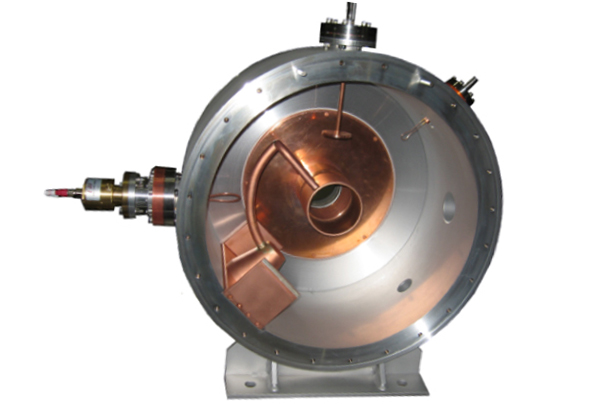Compact, greater performance, greater flexibility – RFQ accelerators from Kreß
RFQ accelerators
An RFQ accelerator (Radio Frequency Quadrupole) is a special type of particle accelerator which is used for the acceleration of particles at low velocity and usually from behind an ion source. The RFQ high-frequency structure has three essential functions: It takes over the transversal and longitudinal focusing for a high efficient RF acceleration.
Kreß primarily develops and manufactures 4-rod RFQ accelerators (RFQ = Radio Frequency Quadrupole). These plants developed by Professor Dr. A. Schempp at the University in Frankfurt offer a special benefit: They are significantly cheaper than conventional 4-vane RFQ, giving greater flexibility. In this way on one hand, the 4-rod RFQs allow adjustment of the high frequency during operation. On the other hand the modulated electrodes are interchangeable.
New RFQ accelerators: higher beam currents and compact size
In recent years, together with the Goethe University in Frankfurt, Kreß has developed and manufactured several RFQ accelerators. These are increasingly replacing the older high voltage injectors, as they allow higher beam currents. At the same time the machines have more compact dimensions. For some years now, RFQ accelerators with downstream IH accelerators are being increasingly used in medical technology, in particular in tumour therapy using ions. Recently, large therapy centres for tumour therapy with ions have been established in Heidelberg, Marburg, Shanghai, Mailand and in Wiener Neustadt.
Improved RFQ accelerators for the MedAustron therapy centre
Working with the University of Frankfurt, Kreß has developed a new RFQ concept for the MedAustron therapy centre in Wiener Neustadt. These advanced RFQs have a rectangular cross section and are based on a modular design. Once assembled, the electrodes no longer need to be adjusted. A further benefit: The highly critical buncher system was removed from the RFQ resonator and relocated to a position behind the RFQ tank.
Innovative 4-rod RFQ from Kreß
Lots of ideas from Kreß have caught on over recent years. The first 4-rod RFQ with a tank made entirely of aluminium features excellent thermal conduction and extremely good vacuum characteristics. This has been possible through the production of a single milled aluminium block. Also the entire cooling concept of the accelerator structure has been improved and an innovative way to fix the tuning plates to the electrode stems has been found. This system is protected by copyright law.

